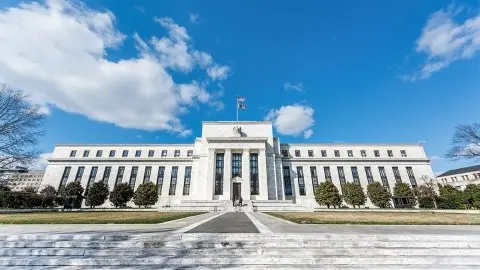Australia’s central bank cuts rates by a quarter point, says more possible
A 25 basis point rate cut takes the Reserve Bank of Australia's official cash rate to just 0.5%. One more quarter point cut would push the central bank to the cusp of unorthodox policy, which suggests we have not seen the bottom in the Aussie dollar just yet
A big change from last month
If we look back at last month's on hold decision by the RBA, we see lots of references to the phase one trade deal, positive global outlook, and only an occasional reference to the coronavirus. There are, in fact, far more references to the bushfires.
Admittedly, quite a lot has changed since then, but we're obliged to say that the case for a rate cut was clearly evident a month ago (we were making it then) and today's cut comes across as a little bit late. If that sounds a bit like sour grapes (we did not anticipate the RBA changing its view so abruptly), then it probably is.
We speculate that the groundswell of dovishness coming from other central banks, the Bank of Japan, Federal Reserve, and most recently, the European Central Bank, may have helped to galvanise support within the RBA for moving this month. Later today, the G7 finance ministers and central bank heads meeting will also likely deliver some words of encouragement (though little actual substance we imagine), and that might also have been a tough backdrop against which to leave rates on hold for a second month.
More coming
The latest statement makes far more of the risks to growth and downplays the likelihood of any improvements in Australian wages or GDP, which for the first quarter, is expected to look "noticeably weaker". We would add that if this is the outlook for the first quarter of 2020, then the second quarter will probably look even weaker. Bear in mind that Australia has only 34 cases of Covid-19 so far, so were the disease to spread locally, then on top of supply chain disruptions and weak Chinese demand, we can also expect domestic demand to suffer as well.
To cut a long story short, the outlook for the virus and Australia is more likely to worsen in the near term than improve. As a result, it is virtually impossible now to imagine that we will not see a further 25bps of easing from the RBA at the April meeting. Markets are already largely pricing this in.
What happens after that depends entirely on the spread of the virus, both globally, and in terms of Australia itself. While some are suggesting a positive scenario based on warming weather, remember, that only applies to the Northern Hemisphere. And as we move towards the middle of the year, parts of Australia will get noticeably cooler, and in all likelihood, wetter.
What could unorthodox policy look like in Australia?
In a piece we wrote about a month ago, we took a close look at what unorthodox policy might look like in Australia, without really being convinced that we might be staring at this in the face so quickly. There are a number of problems with trying to impose an ECB-style quantitative easing programme on Australia, not least of which is the relative absence of government debt securities. Likewise, the RBA seems to view negative interest rates as likely to do more harm to domestic demand than good - correctly in our view, for what that is worth.
That doesn't leave a lot of options, though some form of targeted lending, along the lines of the Bank of England's experiment with "funding for lending" (cheap money for banks, contingent on SME lending) might be a possible avenue, as would buying up bank paper to reduce their funding costs.
What does this mean for the AUD?
The reaction of the Australian dollar (mildly higher) after the RBA cut shows how markets had already completely priced in the move by the time of the meeting, and some investors were possibly expecting a deeper cut.
In line with the global dovish repricing, futures on the RBA cash rate show markets broadly expecting another cut at the April meeting (around 75% implied probability). While this may suggest that further downside for AUD looks limited, there is a key caveat. As highlighted above, another cut would inevitably raise the question of unorthodox monetary policy. Unless the RBA clearly excludes this option, markets will likely be tempted to speculate around possible QE, which would inevitably pile pressure on the AUD.
Looking at the shorter-term, a round of global easing and a subdued US dollar may help avert another slump in the AUD/USD for now. However, we have noted above how the coronavirus has only marginally spread within Australian borders so far: this may change quite rapidly (as we learned from other countries), which further convinces us it is still early to call a bottom in AUD just yet.
This publication has been prepared by ING solely for information purposes irrespective of a particular user's means, financial situation or investment objectives. The information does not constitute investment recommendation, and nor is it investment, legal or tax advice or an offer or solicitation to purchase or sell any financial instrument. Read more
Download
Download snap
3 March 2020
Good MornING Asia - 4 March 2020 This bundle contains 3 Articles